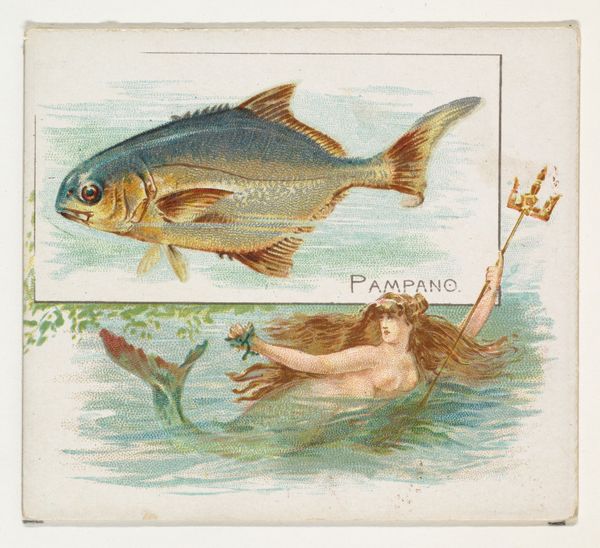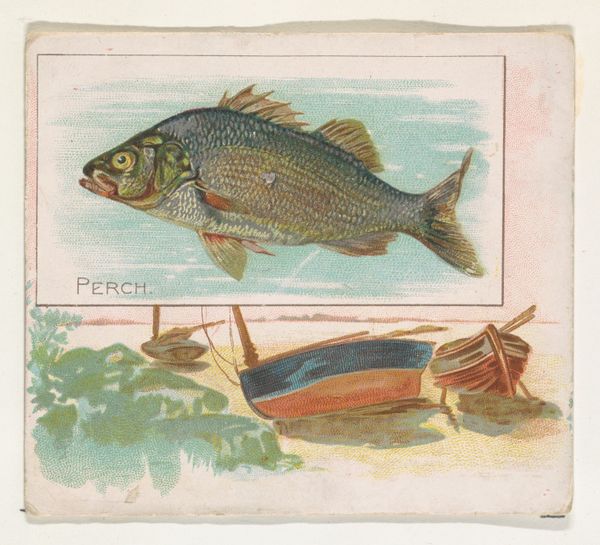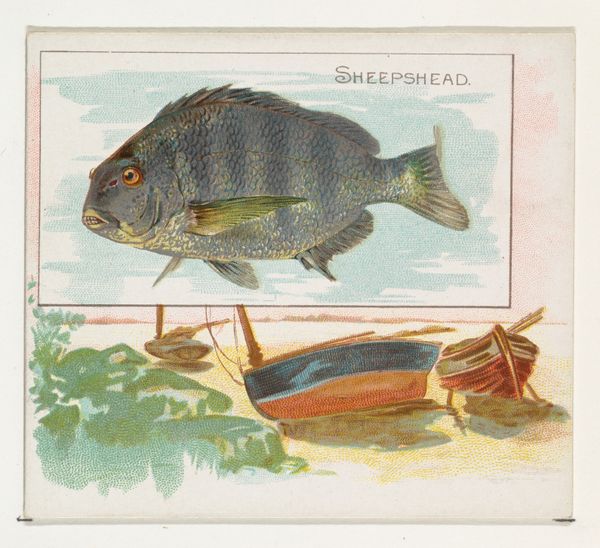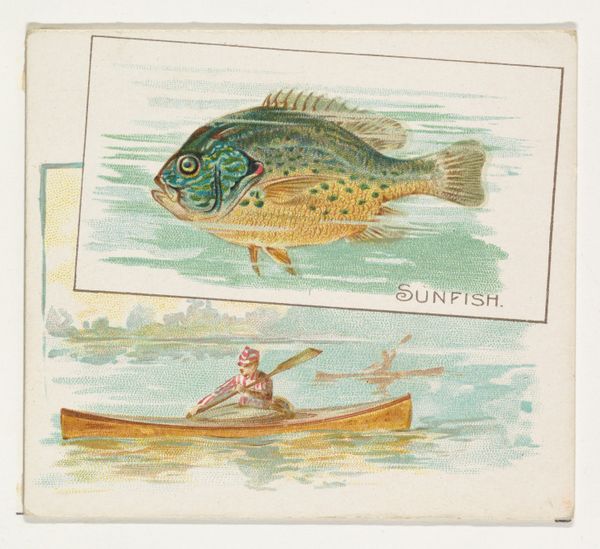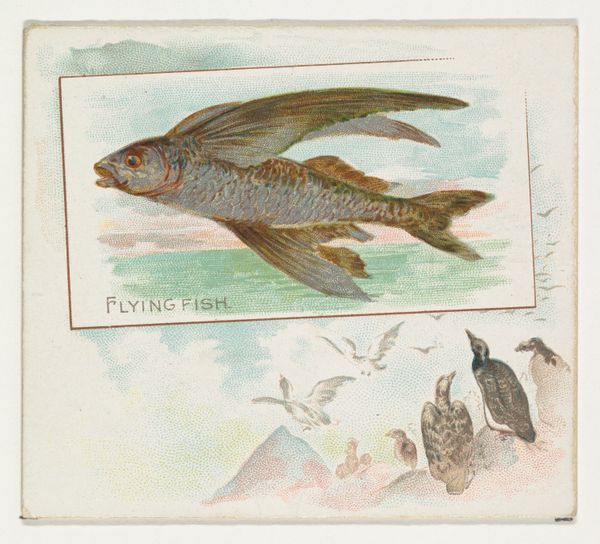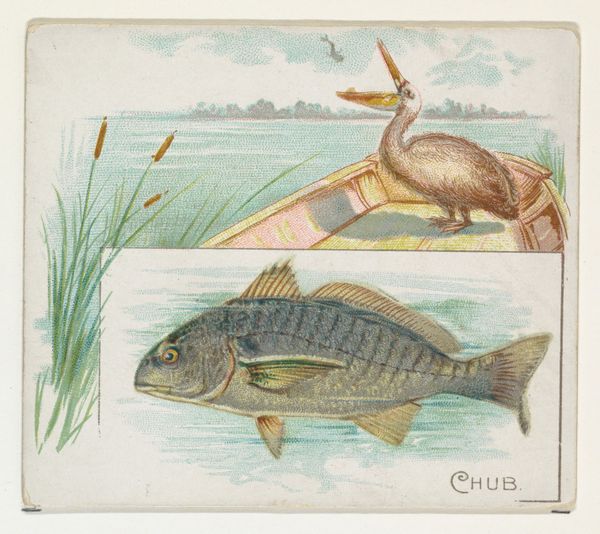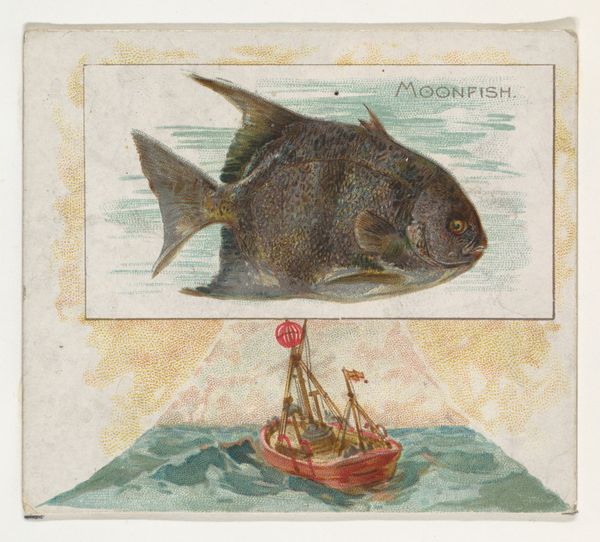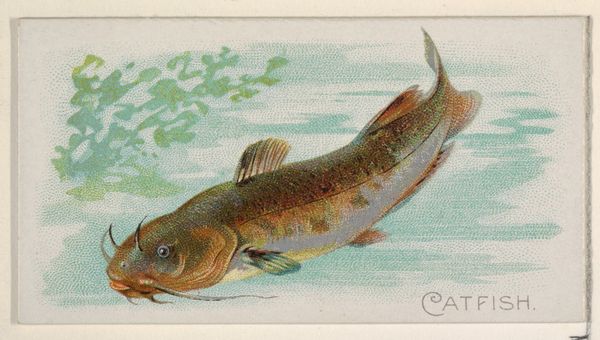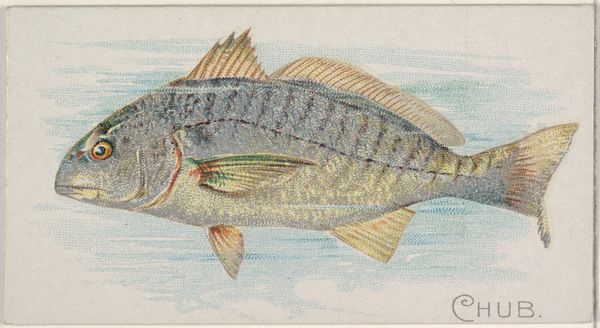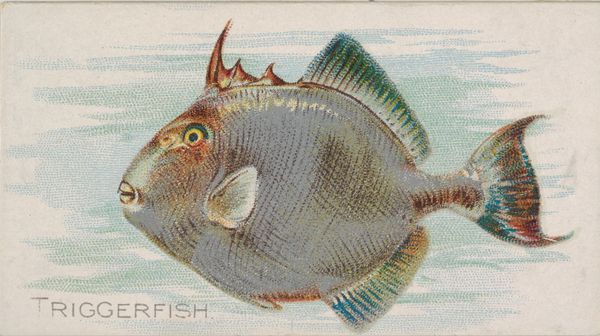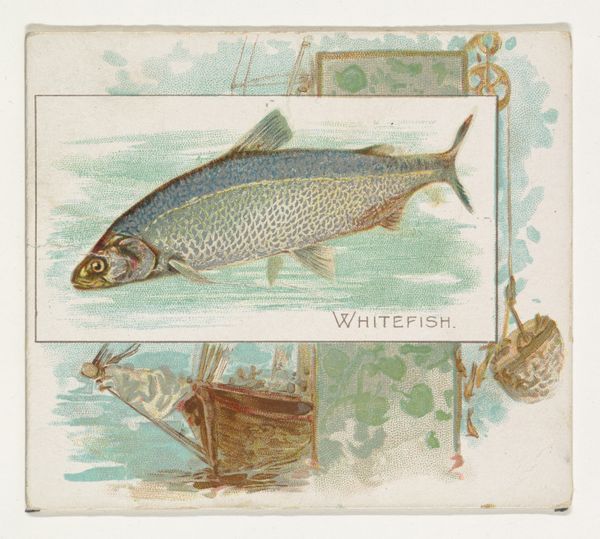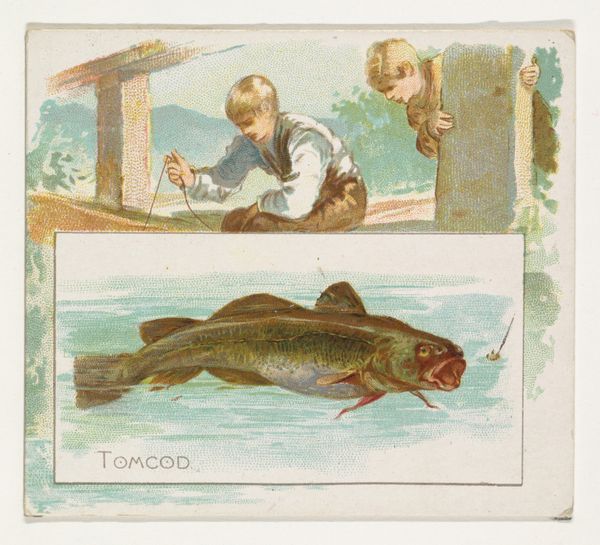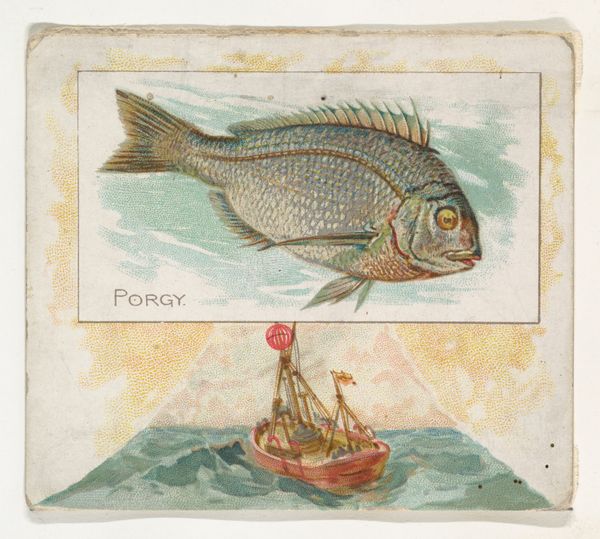
Grouper, from Fish from American Waters series (N39) for Allen & Ginter Cigarettes 1889
0:00
0:00
Dimensions: Sheet: 2 7/8 x 3 1/4 in. (7.3 x 8.3 cm)
Copyright: Public Domain
Curator: This chromolithograph, titled "Grouper," comes from Allen & Ginter’s "Fish from American Waters" series dating back to 1889. They were originally inserts in cigarette packs. It’s a blend of watercolor, colored pencil, and print techniques, now residing at The Metropolitan Museum of Art. What are your first thoughts on seeing it? Editor: Intriguing juxtaposition. A very realistically rendered Grouper floats above a mermaid holding a miniature trident. The sea, suggested by faint blue and green hues, feels… whimsical and a little unsettling, if I’m honest. Curator: I find it a fascinating representation of its time, reflective of Victorian interests in natural history, but filtered through commercial marketing strategies. Tobacco companies frequently used exotic imagery, often blurring the lines between reality and fantasy. Consider the power structures at play – these images helped build empires, literally funded by exploiting labor and shaping cultural narratives about nature. Editor: The mermaid feels symbolic – almost a displaced goddess or water spirit subjugated to sell cigarettes. Look at her expression – or lack thereof. A stylized smile is absent, but does she show agency? Curator: That's precisely it! Consider the historical context. This was a time when women, particularly working-class women, were also heavily targeted by tobacco companies, associating smoking with liberation but doing so through heavily gendered imagery. It really pushes me to consider the ethics inherent to these practices. And further, how this artwork may further social inequality by way of promoting nicotine use. Editor: Definitely! And in terms of visual symbolism, the trident, so often associated with Neptune, suggests dominance over the seas, subtly linking the consumption of tobacco with masculine control and exploration. Yet, placing this signifier into the arms of a woman evokes curiosity and confusion about expected gender roles. It also speaks of human aspirations over wildlife or over nature. Curator: I’m captivated how the mundane - cigarettes - intersected with grand mythological themes. In terms of visual tropes and what these images perpetuated, this really tells us more about what it meant to be American, or what Americans wanted to imagine and claim at that moment in time. Editor: I find the contrasting representational styles especially interesting: a hyper-realistic fish paired with this highly idealized, classical-nymph-like figure. What do you make of that? Curator: Good point! The real fish roots this image into “reality”, a realness the mermaid cannot lay claim to. That it’s an object caught for consumption. In the context of commercial advertisement, it evokes and reproduces nature being framed as nothing more than commodities for our desire. Editor: Looking at this work today serves as a reminder of how art can reflect and shape complex, problematic cultural landscapes. I keep coming back to this woman holding a trident – her story beyond the image. Curator: Yes, understanding art like this helps us critique not just its beauty, but also the structures of power it served and, in many ways, continues to reflect.
Comments
No comments
Be the first to comment and join the conversation on the ultimate creative platform.
